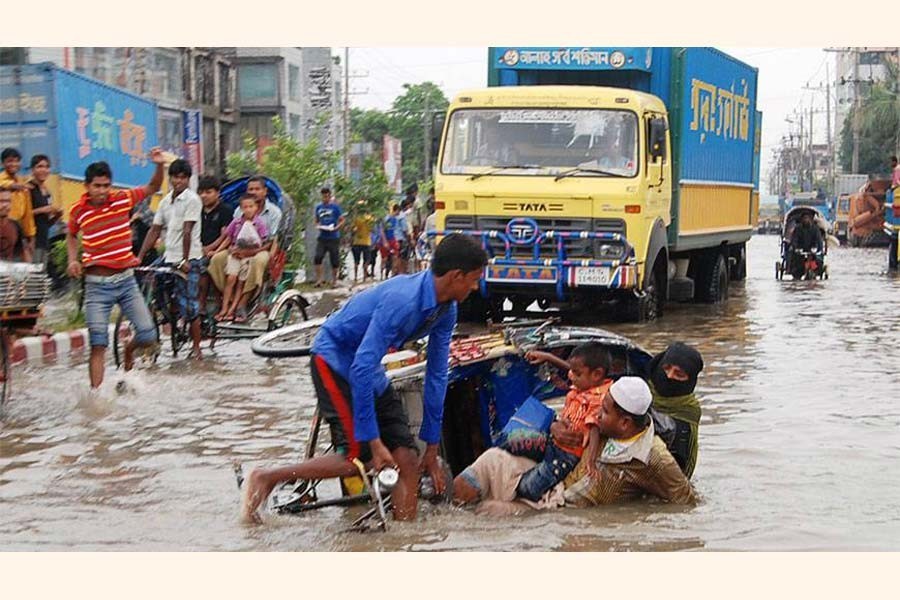Water-logging has been a seasonally persistent problem for the capital city and the port city. But of late the problem has rendered the two cities virtually dysfunctional even with moderate rainfall. Belying the assurance given by a top-notch government functionary a year ago that Dhaka city would be free of water-logging, the problem has become acuter. One of the reasons for accumulation and stagnation of water following moderate to heavy rains is obviously the on-going work for elevated expressway. But this should not have created more than negligible water-logging pockets -ones in no way responsible for bringing the entire city traffic to a standstill. But the reality is that the fragile traffic system of the capital in particular simply breaks down, causing untold sufferings to commuters and severely disrupting people's schedules and urgent business.
Already infamous for its tailback, the capital city forces its inhabitants to incur a daily loss of 3.2 million working hours on an average. In an analysis of the Dhaka traffic, the World Bank found that the average traffic speed in Dhaka dropped to just seven kilometre from 21 kilometre a decade ago. A similar comparative study of nightmarish water-logging now and a decade ago would have revealed unabated deterioration in the situation. The reasons why rainwater cannot be drained away are many but some notable ones cannot escape the policymakers' attention. Here is a city where the water bodies -both within and around -have been mostly left unattended. Also the space left uncovered by concrete or asphalt is just a fraction of the covered area, resulting in no seepage of water underground. Of the 43, canals only 25 are functional and that too in a restricted manner. Then, floodplains around the city have been indiscriminately land-filled for housing. Finally, the rivers girdling the city have also been encroached upon with the result that the shallow riverbeds lose flow and flood their banks in the monsoon.
The original detailed area plan (DAP) had to be revised under coterie pressure. Even there is no sign that the revised plan will be complied with. When a megacity's water retention area is destroyed in the name of development, sudden burst of water from a nearby river in spate or heavy rains can wreak havoc with the city life. Both Chennai and Mumbai have experienced this over the past few years. In the United States of America, Florida had been a victim to this unwise city development programme. The days are not far away when Dhaka may encounter a disaster of this proportion much like the ones it witnessed in 1981 and 1982 or even severer ones.
The World Bank in its report, "Toward Great Dhaka: A New Development Paradigm Eastward" finds a solution to the city's water-logging and traffic congestion, as the title suggests, in shifting the main hub of the city to the east around Purbachal and building the eastern embankment along the Balu river. That the administrative and commercial hubs of the country are overwhelmingly concentrated to a limited area, including the old part of Dhaka is indisputable. Sure enough, the pressure can be eased off if the hub is shifted or the administrative centres decentralised.


